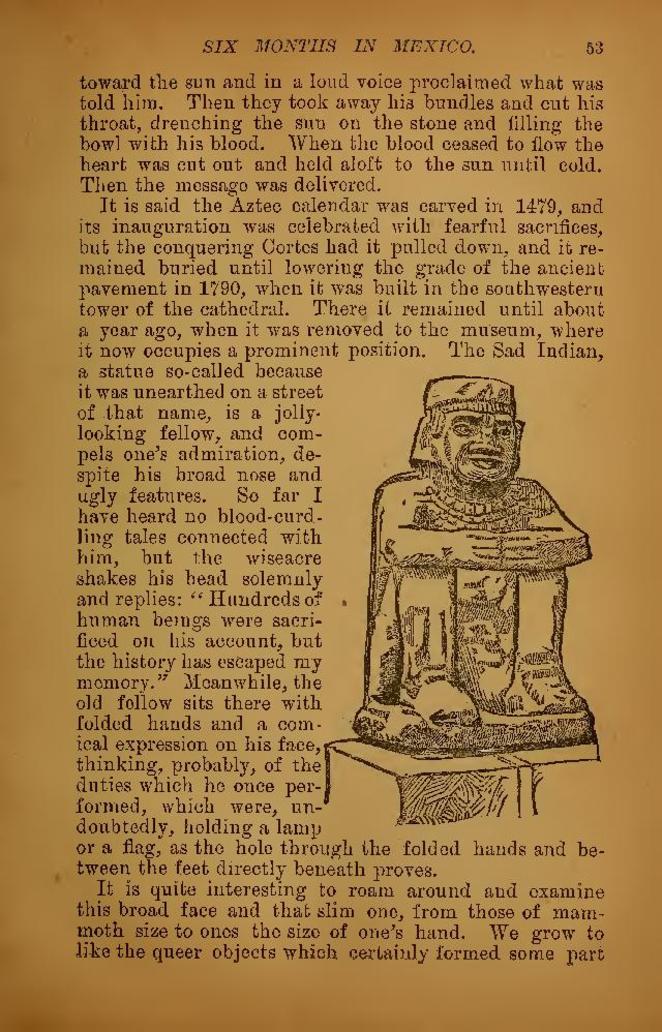toward the sun and in a loud voice proclaimed what was told him. Then they took away his bundles and cut his throat, drenching the sun on the stone and filling the bowl with his blood. "When the blood ceased to flow the heart was cut out and held aloft to the sun until cold. Then the message was delivered.
It is said the Aztec calendar was carved in 1479, and its inauguration was celebrated with fearful sacrifices, but the conquering Cortes had it pulled down, and it remained buried until lowering the grade of the ancient pavement in 1790, when it was built in the southwestern tower of the cathedral. There it remained until about a year ago, when it was removed to the museum, where it now occupies a prominent position. The Sad-Indian, a statue so-called

because it was unearthed on a street of that name, is a jolly-looking fellow, and compels one's admiration, despite his broad nose and ugly features. So far I have heard no blood-curdling tales connected with him, but the wiseacre shakes his head solemnly and replies: "Hundreds of human beings were sacrificed on his account, but the history has escaped my memory." Meanwhile, the old fellow sits there with folded hands and a comical expression on his face, thinking, probably, of the duties which he once performed, which were, undoubtedly, holding a lamp or a flag, as the hole through the folded hands and between the feet directly beneath proves.
It is quite interesting to roam around and examine this broad face and that slim one, from those of mammoth size to ones the size of one's hand. We grow to like the queer objects which certainly formed some part
